Ibn Battuta's Impact on Dubai's Cultural Landscape
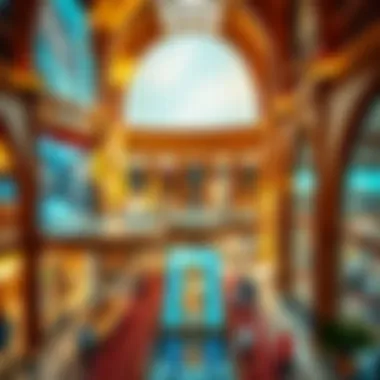
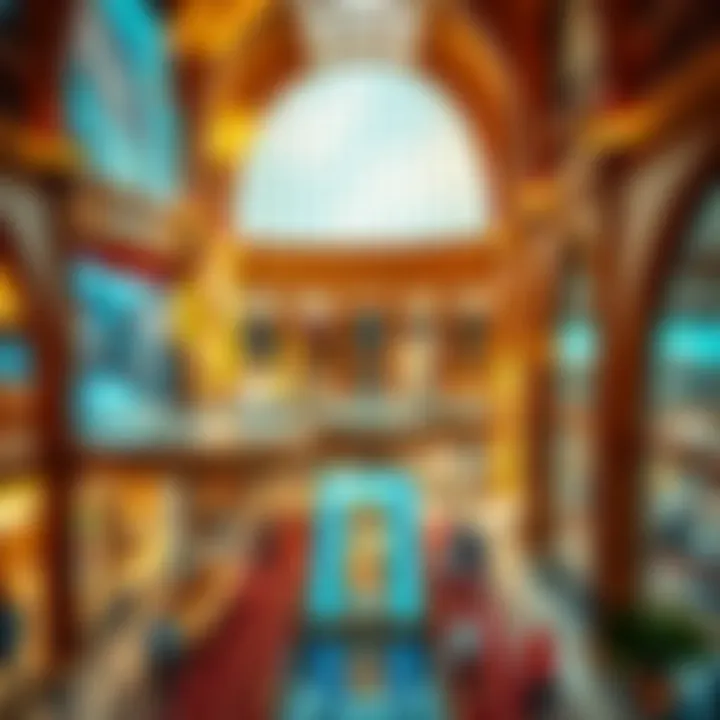
Intro
Ibn Battuta, a name that echoes through the corridors of history, is not just a story from dusty textbooks. His adventures across the Islamic world in the 14th century are a treasure chest of cultural insights and historical significance. In modern-day Dubai, his legacy reveals itself in the city’s architectural marvels and diverse cultural tapestry. As one of the most celebrated travelers of his time, Battuta’s journeys offer a unique lens through which we can understand Dubai's evolution from a humble trading post to a global metropolis.
In this examination of Ibn Battuta's impact on Dubai, we will peal back layers of influence that shape the city's present. From architecture inspired by his travels to contemporary real estate opportunities that resonate with his spirit of exploration, the narrative unfolds to reveal insightful connections. We will explore how his legacy inspires current property markets, making it a focal point for investors, homeowners, and expatriates looking for vibrant opportunities in a melting pot of cultures. Let’s dive in and navigate the intricate pathways that link Ibn Battuta to the dynamic environment that is Dubai today.
Market Trends and Insights
Current Market Overview
The real estate landscape in Dubai is as dynamic as the city itself. Amid the ever-changing skyline, current market trends reflect a blend of tradition and innovation, characteristics that Ibn Battuta himself might appreciate. The surge in luxury developments, which resonate with the opulence and grandeur of Islamic architecture, demonstrates the ongoing influence of historical narratives on modern design. Developers are increasingly incorporating elements reminiscent of Battuta’s journeys, transforming the skyline with properties that reflect cultural heritage.
Investors are keenly observing these trends, particularly as softening economic conditions have paved the way for attractive pricing in various segments, including residential and commercial properties. Here, the essence of Battuta's quest for knowledge and culture is mirrored in the real estate bids that spice up the market. Notably, luxury apartments and commercial real estate options are gaining traction, reflecting a growing interest in properties that translate authentic narratives into architectural design.
Future Predictions and Opportunities
Looking ahead, the outlook for Dubai's real estate market remains optimistic. With high-profile events like Expo 2020 and increasing foreign investments, the city is poised for growth. Just as Ibn Battuta's explorations opened new frontiers, today’s investors can embark on their own journey towards untapped opportunities.
The focus is shifting towards sustainable developments that align with a global consciousness, something Ibn Battuta would likely endorse given his respect for diverse cultures and environments. The potential for smart homes and eco-friendly construction is on the rise, setting the stage for a new wave of investments that honor both heritage and modernity.
Key trends to watch:
- Increased demand for mixed-use developments.
- Growth in luxury retail and hospitality sectors.
- Sustainability becoming integral in development.
The interplay between historical significance and contemporary needs weaves a complex narrative that not only honors Ibn Battuta's explorations but also creates new possibilities for growth and investment in Dubai’s thriving property market.
"As no traveler knows the worth of water till the well is dry, no investor knows the value of opportunity until it presents itself."
Navigating the paths of the past could indeed illuminate the paths of the future in Dubai’s ever-evolving real estate opportunities.
Property Types and Listings
Luxury Apartments
As the Dubai skyline continues to evolve, luxury apartments have forged their own identity. Many of these residences draw inspiration from the architectural splendor of historical Islamic designs, reminiscent of the mosques and palaces Ibn Battuta might have encountered on his travels. Today, these properties offer a blend of modern amenities and cultural motifs. Some standout areas include:
- Downtown Dubai: Housing iconic towers like the Burj Khalifa, luxury here comes with city views.
- Dubai Marina: A vibrant community where luxury meets the tranquility of waterfront living.
- Palm Jumeirah: Known for its opulent villas and apartments overlooking the Arabian Gulf.
Commercial Real Estate Options
On the commercial front, Dubai is home to a variety of properties ranging from office spaces to retail outlets, all flourishing amidst a blend of cultures. Areas such as:
- Jumeirah Lakes Towers: Known for its business-friendly environment.
- Business Bay: A burgeoning hub for companies, reflecting the ambition that Ibn Battuta embodied.
- Deira: Retaining its charm and serving as a key retail destination, it resonates with the historical trade routes that Ibn Battuta once frequented.
Preface to Ibn Battuta
Ibn Battuta's name rings a bell in the minds of those who cherish exploration and adventure. He is not merely a historical figure; he is a symbol of curiosity and cultural exchange. His travels not only spanned vast distances across the Islamic world but also bridged diverse cultures, languages, and traditions. In the context of modern Dubai, understanding his legacy can be as illuminating as a lantern in the dark.
This section aims to establish a solid foundation by diving into the historical backdrop of his journeys. By doing so, it helps paint a clearer picture of his significance in world history and how his explorations provide context for today’s cultural landscape in Dubai. Investors, homeowners, and expatriates can glean not only insights about the city's past but also its connection to a global narrative of trade, culture, and architecture.
Historical Context of His Travels
Ibn Battuta's odyssey began in 1325 when he left his hometown of Tangier, Morocco, embarking on what would become a twenty-nine-year journey across Africa, the Middle East, and Asia. His travels were motivated by a quest for knowledge and a desire to complete the pilgrimage to Mecca, known as the Hajj. What sets him apart from others who have undertaken similar journeys is the vast geographical expanse and the variety of cultures he encountered.
During his voyage, the world was intricately linked, yet still very much separated by long distances. Arab trade routes connected far-off lands, fostering not only commerce but also an exchange of ideas. The era was marked by flourishing cities like Baghdad, Cairo, and, later, Constantinople. These vital hubs of civilization created opportunities for travelers like Ibn Battuta to gather stories and experiences that shaped his views of the world.
The richness of Ibn Battuta's accounts offers invaluable insights into the societal norms, politics, and daily lives of the people he met. His narratives serve as historical documents that illustrate the dynamics between different cultures during the 14th century, showcasing the beauty of human diversities while also highlighting the underlying commonalities. These accounts give us a glimpse into the interconnected tapestry of the medieval world, one that greatly influenced what would later become modern cities like Dubai.
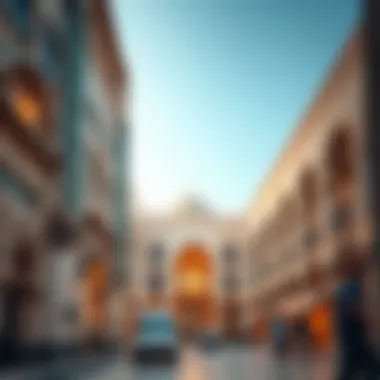
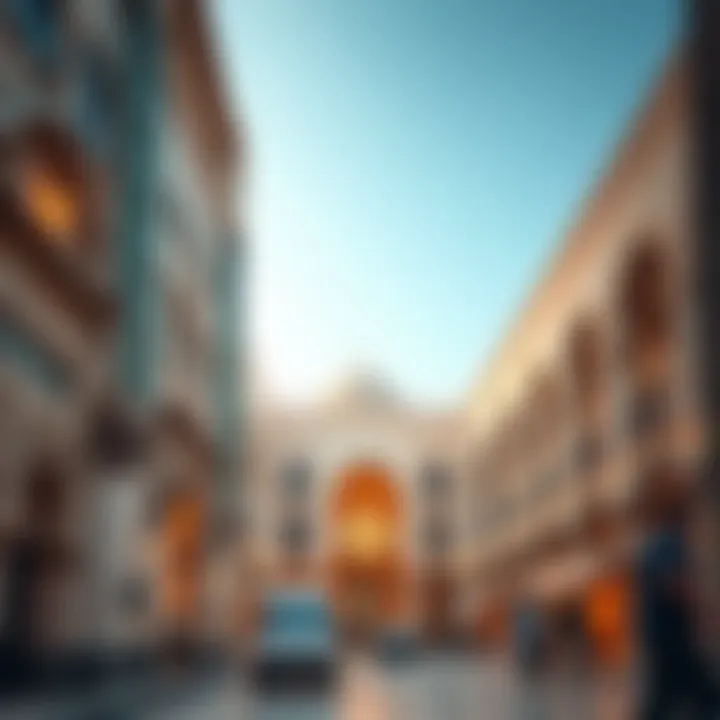
Ibn Battuta's Significance in World History
Ibn Battuta’s significance is not just confined to the annals of travel literature. His writings serve as a time capsule, preserving the thoughts and sentiments of a bygone era. Unlike many explorers of his time, he not only documented the places he visited but also analyzed the interplay of cultures, making his work an early form of ethnography.
To many historians, his travels have revealed critical truths about the social structures and economies of various regions. For instance, Battuta's observations about the trade practices in the port cities along the Indian Ocean present important context for understanding the early global economy. The Turkic and Persian influences on architecture, which he noted in both Egypt and the Arabian Peninsula, spill over into what we see in Dubai today—a blend of old and new that reflects the heart of a global city.
Additionally, his travels brought back stories that changed perceptions and inspired generations. In today’s ever-globalizing world, the essence of Ibne Battuta's journeys resonates strongly; the push-and-pull of cultural exchange remains a cornerstone of society. Recognizing his contributions allows one to appreciate the mosaic of cultures in Dubai, making the city not just a place to live but a living testament to history.
"Traveling—it leaves you speechless, then turns you into a storyteller."
— Ibn Battuta
In summary, Ibn Battuta’s legacy extends far beyond his time. For investors and homebuyers looking to understand the depth of Dubai’s cultural roots, his journeys help frame the present-day narrative, where every corner reflects a history intertwined with exploration, trade, and the vibrant exchange of ideas.
Ibn Battuta's Journey to Dubai
Ibn Battuta's arrival in Dubai marks a significant chapter in his expansive travels across the Islamic world. His journey not only brought him to contemporary landscapes but also shaped the cultural and economic frameworks of the region. The story of his travels is more than just a personal account; it highlights the rich interactions between diverse cultures, trade exchanges, and the knowledge that flourished along the trade routes he traversed.
Initial Arrival and Exploration
When Ibn Battuta first set foot in Dubai during the 14th century, the area was still in its infancy as a trading hub. Often referred to as a mere collection of fishing villages at that time, it lacked the towering skyscrapers we associate with the city today. Nonetheless, Ibn Battuta's observations reveal that this little port held vast potential. Amidst his wanderings, he noted the hospitable nature of its inhabitants and the bustling activities around the creek, which served as a lifeline for trade.
His arrival is seen as pivotal, not just from a cultural perspective, but also in establishing connections with other parts of the Gulf and beyond. For example, the agricultural practices and the community’s reliance on the sea for livelihood were noteworthy aspects of the environment he described.
Cultural Encounters
Ibn Battuta's time in Dubai facilitated encounters that contributed to a deeper understanding of local customs and social practices. The local culture presented a melange of influences that had been absorbed over centuries of trade and migration. He noted the distinctive clothing, the intricate designs of local jewelry, and the various dialects spoken among the traders. Moreover, the lively markets pulsated with activities ranging from barter deals to intricate craftsmanship.
His interactions with local merchants provided insights into socio-economic structures during that period. These early exchanges foreshadowed a long-standing tradition of commerce in Dubai. The city would later metamorphose into a global trade nexus, influenced in part by the seeds planted during Ibn Battuta’s explorations.
"The essence of Dubai's heritage is drawn from its historical crossroads, a reflection of the interconnectedness that Ibn Battuta first tasted and later celebrated in his writings."
Through his observations, it's evident that many of Dubai's present customs can be traced back to those formative years he spent there. The importance of hospitality, the emphasis on trade, and the sharing of cultural narratives can all be connected to Ibn Battuta’s early encounters in this region. Understanding his journey paves the way for appreciating how history reverberates through modern-day Dubai, particularly in areas like real estate, where the richness of the past fuels contemporary developments.
In essence, Ibn Battuta's exploration of Dubai was not merely a stop on his journey but a catalyst that began a dialogue between past influences and future possibilities. This legacy continues to inspire investors and residents alike, highlighting the city's evolution from a modest settlement into a vibrant, multifaceted metropolis.
Impact on Dubai's Cultural Heritage
The impact of Ibn Battuta on Dubai's cultural heritage is profound, transcending the realms of mere explorations and ventures into the fabric of the city's identity. As a traveler who ventured into the depths of diverse cultures and traditions, Ibn Battuta has left an indelible mark that can still be felt today. His accounts provide not just a window into the past but also a blueprint for understanding how interconnectedness has shaped modern Dubai. Examining this influence sheds light on the social customs and architectural styles that define the metropolis now.
Traditions and Customs Influenced by Exploration
Ibn Battuta's travels are a treasure trove of insights about the numerous customs and traditions that were exchanged during his journeys. When he roamed the streets of what is now Dubai, several aspects of local culture were influenced by the trade and interactions he observed. For instance, the hospitality extended to travelers today can trace its roots back to the very traditions he described in his writings. The warm welcome offered by Emirati families reflects a commitment to honor guests, a value that was prevalent in Ibn Battuta’s time.
In his explorations, he noted the significance of communal gatherings, which are still prevalent in contemporary Dubai. Events such as Eid celebrations, where families come together to share meals and exchange gifts, resonate strongly with the traditions he experienced.
- Shared meals: Meals shared among friends and family during festive occasions echo the communal traditions Ibn Battuta cherished.
- Storytelling: The art of storytelling flourishes in Dubai, with elders often sharing tales from the past, much like the accounts Ibn Battuta penned.
- Cultural festivals: Various cultural festivals inspired by his travels showcase the vibrant diversity that Dubai boasts today.
Much like Ibn Battuta, who fused influences from different cultures, modern Dubai is a melting pot, where East meets West. This blend of old and new serves as a reminder of the rich cultural tapestry woven through centuries of interaction.
Architectural Influences from the Past
The architectural landscape of Dubai today stands as a testament to its rich history, mixed with influences also derived from Ibn Battuta’s voyages. While skyscrapers and modern structures dominate the skyline, some architectural features pay homage to the styles observed during Ibn Battuta's time.
For example, traditional wind towers, known locally as "barjeel," found in some of Dubai’s older buildings, were designed to combat the desert heat. Ibn Battuta would have appreciated the ingenuity of such designs, which are integrally rooted in the region’s history.
- Islamic architecture: Elements from Islamic architecture emphasize geometric patterns and intricate tile work, paralleling the aesthetics Ibn Battuta would’ve encountered in his travels.
- Sustainable designs: Many of Broadway's new developments reflect sustainable practices, reminiscent of the resourcefulness noted in Battuta’s historical observations surrounding environmental adaptation.
- Community spaces: Public parks and squares designed for interaction reflect the socially focused aspects of buildings that were likely similar to those seen during his explorations.
In synthesizing the past with the present, Dubai signifies an ongoing journey, one that draws strength from its historical roots while forging ahead into the future. By examining how Ibn Battuta’s legacy continues to influence the cultural and architectural heritage, it becomes clear that travel and exploration are foundational in shaping identities, both individual and communal.
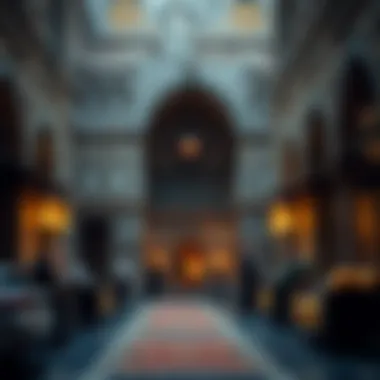
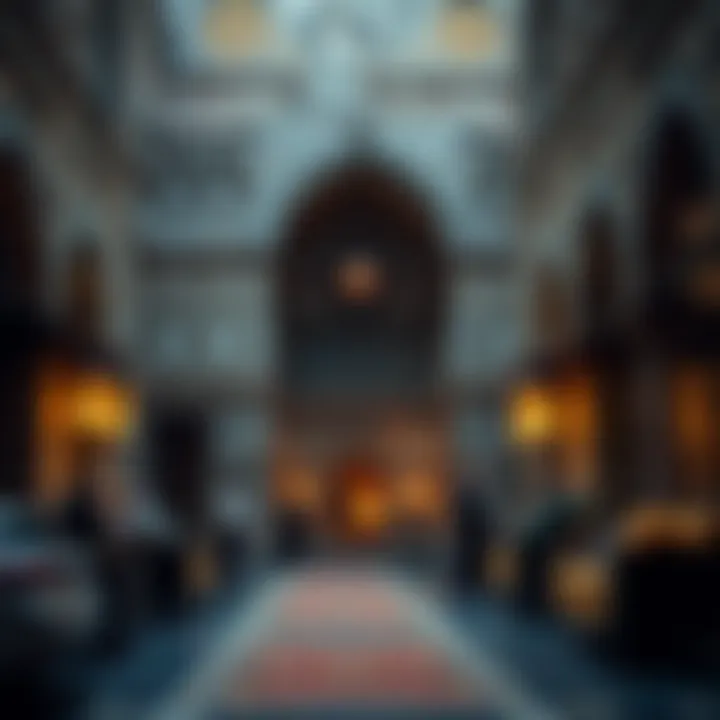
Modern-Day Dubai: A Reflection of Ibn Battuta's Legacy
The legacy of Ibn Battuta finds a fascinating expression in modern Dubai, a city that has grown from humble beginnings into a global hub for commerce and culture. Understanding this connection is crucial. Not only does it highlight how historical narratives shape present realities, but it also points to opportunities for investment and community development. As we delve into Dubai's urban landscape today, we see that the spirit of exploration and cultural exchange that Ibn Battuta embodied remains deeply ingrained in the city's fabric.
Urban Development and Growth
Dubai’s transformation over the decades is nothing short of remarkable. From a small trading post, it has evolved into a vertical city that seems to touch the clouds. This development can be seen as a direct lineage from Ibn Battuta's journeys, where trade routes expanded through the integration of various cultures and ideas. His descriptions of bustling markets and diverse communities resonate in today’s souks and skyscrapers.
- Rapid Growth: In the 20th century, visionaries such as Sheikh Rashid bin Saeed Al Maktoum set the wheels in motion for Dubai's rapid urbanization, much like the ambitious spirit of Ibn Battuta himself. Major investments in infrastructure, including the Dubai Metro and world-class airports, play a pivotal role in its growth.
- Strategic Location: The city’s geographical position as a crossroads of the Middle East continues to attract international businesses and tourists alike. Companies see Dubai as a launchpad for both Eastern and Western markets, echoing Batutta’s role in fostering connections across different lands.
- Sustainable Development: Today, there is increasing awareness of sustainability in urban planning, mimicking the traditional practices of resource management that Ibn Battuta observed in his travels. This focus on environmentally friendly growth can potentially offer lucrative investment avenues and appeal to conscientious consumers.
Cultural Institutions and Museums
Cultural institutions in Dubai have become vital custodians of the city’s identity, much like the historical scholarship Ibn Battuta contributed to during his time. His accounts inspire not only the narrative of travel but also the portrayal of cultures and traditions that can be found in local museums and cultural sites today.
- Dubai Museum: Located in the Al Fahidi Fort, this museum offers insight into the UAE’s past, serving as a reminder of the region’s rich history in trade and cultural exchange that resonates with Ibn Battuta's experiences.
- Ibn Battuta Mall: This shopping and entertainment destination pays homage to the explorer himself. The mall features thematic sections dedicated to various countries he visited, making the shopping experience a celebration of global culture, albeit with a modern twist.
- Global Village: This open-air theme park brings together cultures from all over the world, representing the multicultural essence of Ibn Battuta’s explorations. It resonates strongly with the idea of connection and unity through diversity.
"Cultural exchange is the essence of progress; every visit teaches us something new."
Investors and homeowners who recognize the value of these cultural institutions often find opportunities for developments that cater to both residents and tourists alike. Such synergy not only preserves the heritage but also boosts the real estate market, driven by an ever-growing interest in Dubai’s historical and cultural significance.
Overall, modern Dubai serves as a living canvas of Ibn Battuta’s legacy, embodying the spirit of exploration while paving the way for new growth and opportunities.
Real Estate Opportunities Arising from Cultural Heritage
The relationship between real estate and cultural heritage in Dubai serves as fertile ground for exploration and investment. As the city continually evolves, it embeds its past within its vibrant fabric, offering unique opportunities for homeowners, investors, and expatriates. This section delves into how the rich tapestry of Ibn Battuta's legacy shapes present and future real estate ventures within the city.
Leveraging Historical Context in Property Investments
Understanding the historical context behind a piece of land or property can be a game-changer. Investors today are increasingly looking toward how the cultural narratives of a location enhance the value of their properties. In Dubai, Ibn Battuta’s journeys and interactions with diverse cultures have laid a strong foundation for appreciating heritage. The historical multi-culturalism, coupled with the modern architectural marvels of the city, creates a unique selling point for properties.
When potential buyers or investors see homes or commercial spaces in areas rich with historical significance, it often fosters a deeper emotional connection. Here are some key elements to consider:
- Cultural Authenticity: Properties that reflect local heritage can fetch a premium, as it adds character and charm.
- Tourism Appeal: Areas that boast strong historical ties often attract tourists, increasing foot traffic and, subsequently, commercial opportunities.
- Investment in Restoration: Properties in historical areas may require refurbishment, which presents a chance for investors to add value.
Consider recent development projects around the Ibn Battuta Mall, where the design incorporates elements inspired by his journeys, offering investors an opportunity to tap into a lucrative market encouraged by both nostalgia and modernity.
Promoting Community Development
The role of community development in relation to real estate investment cannot be overstated. Dubai's rich history, characterized by Ibn Battuta’s explorations, provides a robust framework for cultivating a sense of belonging among residents. This sense of community is invaluable not only for enhancing property values but also for creating an inclusive environment where cultures converge.
Here’s how community development can thrive:
- Interactive Spaces: Developments that incorporate cultural heritage into public spaces (like markets or parks) foster communal activities, encouraging social interaction and building local identity.
- Education and Awareness Programs: By investing in cultural education around historical contexts, developers can attract clients who value an informed community.
- Sustainable Living Initiatives: Preservation of cultural landmarks and heritage sites can potentially boost sustainable living solutions, influencing property developers to integrate green spaces into their projects.
Leveraging these strategies does not simply elevate the appeal of the property; it injects a sense of responsibility toward heritage preservation—a concept many modern buyers appreciate. As Dubai forges ahead, the call to blend cultural legacies with contemporary community needs presents fresh vistas for property investments.
"Understanding the narratives that shape our spaces is critical to unlocking their true potential. In recognizing these stories, we not only preserve the past but also anchor the future."
This intertwining of culture with community development exemplifies how entrepreneurs can approach real estate with a long-term vision. The legacy of Ibn Battuta is alive, serving both as a foundation for understanding today’s Dubai and as a springboard into its future.
The Role of Tourism in Preserving Heritage
Tourism plays a vital role in the preservation of cultural heritage, particularly in a diverse and rapidly evolving city like Dubai. As the past mingles with a modern lifestyle, tourism helps to ensure that rich histories, such as that of Ibn Battuta, do not fade into obscurity. Rather, they become woven into the very fabric of contemporary urban experiences.
The growth in visitors exploring sites tied to traditional themes allows for a tangible connection to history. This connection fosters a deeper appreciation for cultural narratives and the complexities surrounding them. For instance, the storytelling aspects of attractions inspired by Ibn Battuta create experiences that transcend a mere visit; they allow tourists to engage with the past in meaningful ways.
- Preservation Funding: The revenue generated through tourism often translates into funding for the maintenance and restoration of historic sites. This ensures that monuments and museums related to Ibn Battuta remain accessible and well-preserved for future generations.
- Educational Value: Tourists, while enjoying their vacation, also partake in learning opportunities. By visiting attractions inspired by Ibn Battuta, they gain insights not only into his travels but also into the broader cultural and historical narratives of the region.
- Community Involvement: Local artisans, historians, and cultural practitioners benefit from tourism as they find new platforms to showcase their talents. Whether it's through guided tours or cultural performances, communities engage with tourists, enriching their experiences while promoting local heritage.
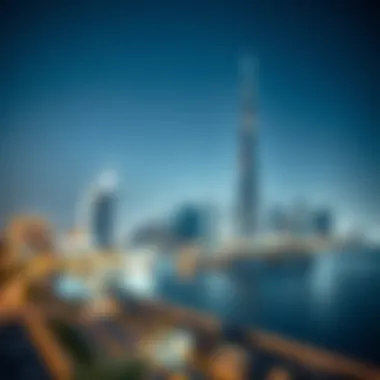
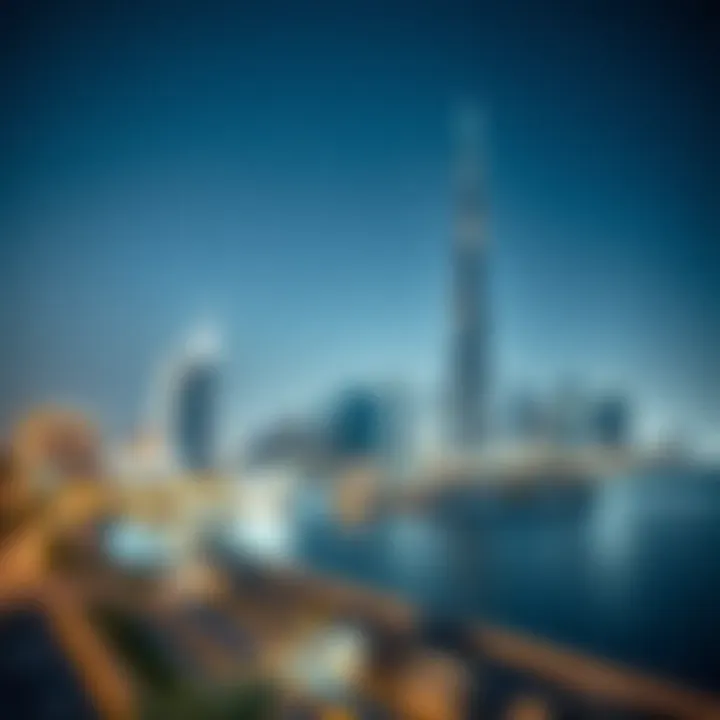
In embracing tourism, cities like Dubai recognize the importance of heritage preservation not merely as a historical obligation but as a dynamic sector that enhances social cohesion and economic vitality. Through this lens, the contributions of Ibn Battuta not only shape the essence of Dubai today but also pave a way for its heritage to thrive against the tides of modernization.
Visitor Attractions Inspired by Ibn Battuta
The legacy of Ibn Battuta resonates through various attractions in Dubai, each crafted to evoke the essence of his travels. A few notable sites include:
- Ibn Battuta Mall: Spanning six different courts representing the continents he explored, this shopping and entertainment complex is a visual and commercial homage to his adventurous spirit.
- Museum of the Future: While not solely about Ibn Battuta, it embodies the future of experiences that draw upon historical influences to create immersive exhibitions, often highlighting Islamic journeys and innovations, including those of Battuta.
- Heritage Village: A traditional Emirati setup that showcases local customs, crafts, and foods reminiscent of the times Ibn Battuta traveled. Here, one can engage with live demonstrations and storytelling sessions that remind visitors of the shared heritage.
These attractions invigorate the narrative of Ibn Battuta, providing platforms that spark interest and promote continual learning about his adventures.
Economic Implications for the Real Estate Market
The surge in tourism tied to historical themes, including the life of Ibn Battuta, influences the real estate market significantly in Dubai. This growth presents various implications:
- Increased Property Demand: As tourists flock to cultural attractions, the demand for short-term accommodations grows, pushing property investors to look into areas near tourist hotspots, like Ibn Battuta Mall or other heritage sites.
- Value Appreciation: Properties located in historical or culturally-rich areas often see an uptick in value due to their allure not only to tourists but also to expatriates seeking to immerse themselves in the heritage they cherish.
- Investment in Mixed-Use Developments: Developers are increasingly opting for mixed-use developments that seamlessly integrate residential, commercial, and cultural spaces. Such projects cater to both locals and tourists, fostering a vibrant community that celebrates its heritage.
In summary, tourism related to Ibn Battuta is not merely a matter of visiting historical sites. Its ripple effects extend deep into the economic underpinnings of the city, shaping real estate strategies and influencing investment decisions toward preserving the rich tapestry of culture that serves as a backbone for contemporary Dubai.
Ibn Battuta Mall: A Modern Tribute
Ibn Battuta Mall stands as a vibrant homage to the journeys of the great Moroccan traveler, Ibn Battuta. Located in Dubai, this mall is more than just a shopping destination; it serves as a cultural landmark that captures the essence of Ibn Battuta’s adventures across various civilizations. By blending historical richness with modern commerce, the mall not only brings to life the cultural narratives embedded in his travels but also attracts locals and tourists alike, keen on experiencing a piece of history in the bustling heart of Dubai.
Concept and Design Inspiration
The design of Ibn Battuta Mall draws heavily from the architectural styles and cultural motifs that Ibn Battuta himself would have encountered during his expeditions. The mall is divided into six themed sections, each representing a different region that Ibn Battuta visited — namely, China, India, Persia, Egypt, Tunisia, and Andalusia.
- Architectural Style: The intricate designs replicate the traditional aesthetics of these regions, showcasing detailed mosaics, domes, and vibrant colors reminiscent of historic sites that Ibn Battuta would have journeyed through.
- Cultural Nuances: Each section is imbued with elements specific to its cultural background, such as Chinese calligraphy or Spanish tile work, thereby creating immersive spaces that evoke the spirit of adventure and exploration.
- Interactive Experiences: Beyond the visual appeal, the mall incorporates cultural exhibits, art installations, and even performances that reflect the traditions and histories of these diverse regions.
This thoughtfully curated environment not only pays respect to Ibn Battuta's legacy but serves as a source of inspiration for many who walk its halls.
Cultural and Commercial Significance
The cultural and commercial implications of Ibn Battuta Mall extend far beyond its walls.
- Tourism Magnet: By featuring representations of multiple cultures, the mall attracts a wide variety of visitors, including expats, tourists, and residents, stimulating economic activity in the area.
- Supporting Local Businesses: The spaces within the mall provide a platform for local artisans and traders, thereby promoting community growth and cultural exchange. This aligns closely with Ibn Battuta’s narrative of connecting different cultures and fostering trade.
- Economic Insights: From a real estate perspective, the mall represents a strategic investment. Its unique allure aids in increasing property values in the vicinity by attracting foot traffic and enhancing the commercial appeal of the area.
"Ibn Battuta Mall is not just a place to shop; it’s a gateway to understanding the interconnectedness of our world, as envisioned by a traveler centuries ago."
In summary, Ibn Battuta Mall captures the artistic and cultural legacy of Ibn Battuta while simultaneously enriching the commercial landscape of Dubai. It’s a fitting tribute to a legacy of exploration and exchange, striking a balance between preserving history and fostering modern growth.
Finale
In the grand tapestry of Dubai's identity, the echoes of Ibn Battuta’s adventures are woven into the very fabric of the city. This article has explored just how significant his legacy remains today, reflecting not only in the cultural milieu and architectural landmarks but also in the economic opportunities for growth and development.
Ibn Battuta's journey through vast and varied terrains offers us insights into the interconnectedness that transcends mere geography; it mirrors the modern ethos of Dubai, where tradition meets innovation. The influence of his travels can be seen in the vibrant community of expatriates and investors who cherish the rich history while participating in the city's dynamic present.
Celebrating a Historical Legacy
Ibn Battuta's life presents a compelling case for appreciating the perseverance of cultural legacies. Today, we celebrate his historical journey not solely as an account of exploration but as a narrative that continues to shape modern lifestyles and investment landscapes.
Factors warranting attention here include:
- Educational Institutions: Teaching the lessons of history as they relate to modern circumstances.
- Cultural Events: Festivals and gatherings that remember the essence of international unity and cultural sharing.
- Architectural Inspirations: Buildings echoing designs that resonate with the past yet cater to the demands of future generations.
Together, these elements foster a community that not only acknowledges its roots but actively engages with them, creating a sense of belonging among both locals and newcomers alike.
Furthermore, understanding the connection between Ibn Battuta's explorations and the vibrant Dubai of today can empower investors and homeowners to make informed decisions. It enhances the appreciation of properties, where potential buyers can see not just walls and ceilings, but also a rich narrative spanning centuries.
Ultimately, as we look ahead, it is crucial to recognize and honor the contributions of figures like Ibn Battuta. His legacies remind us of the importance of cultural heritage and the bonds formed across distances, providing a wellspring of inspirations for generations to come. Whether one is here for investment, residency, or exploration, his story serves as an everlasting reminder of the beauty in discovery and connection.
"Leaders aren't born, they are made. Ibn Battuta's journey is proof that exploration shapes our identities and futures—embracing legacies as we define our own."
Through this acknowledgment of history, a newer, better tomorrow is built upon the foundations laid by those like Ibn Battuta who dared to wander.











